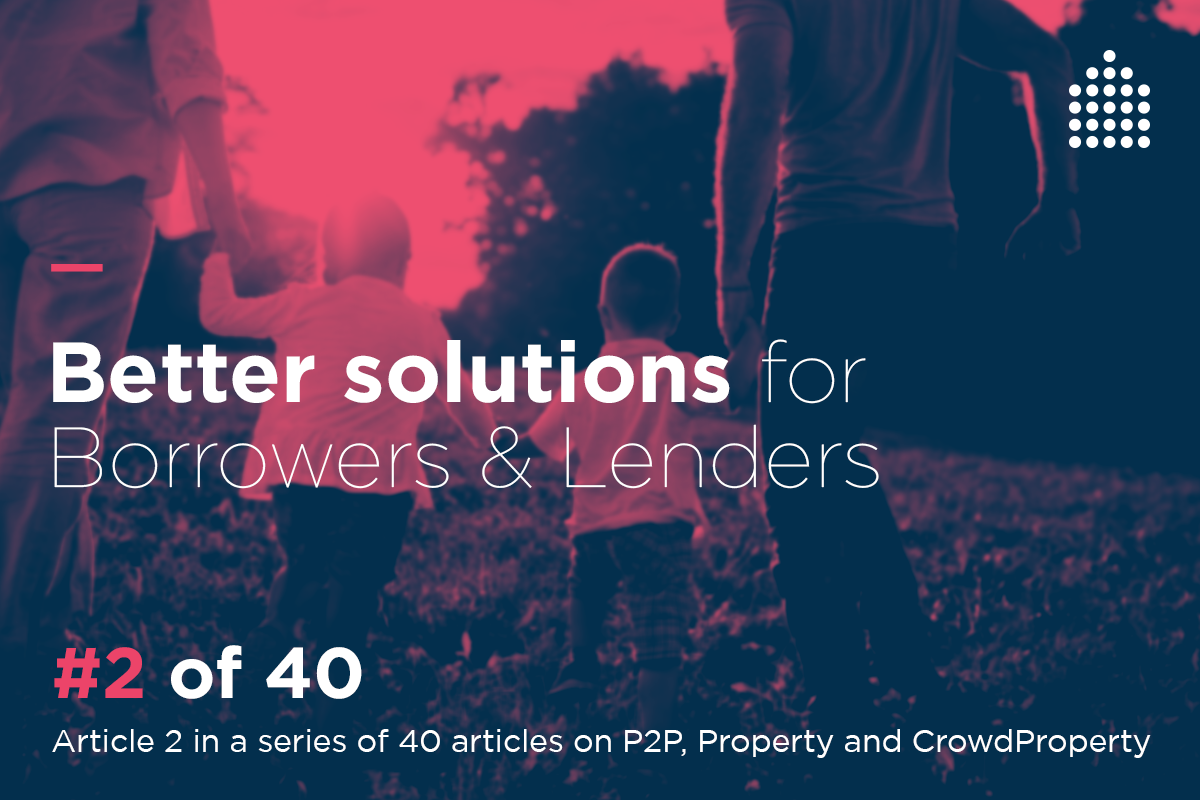Borrow
Case Study
Podcasts
Awards
About
Article 2 in a series of 40 articles on P2P, Property and CrowdProperty
Following on from article 1 which explained why peer-to-peer lending even exists, in this second article in our extensive series of articles written to help you navigate the key considerations in P2P, Property and CrowdProperty, we explain why CrowdProperty exists. Next up, we’ll be digging deeper into why CrowdProperty is different on the Lender side.

There’s a shaving razor company – Harry’s, if memory serves – which claims it started because the founders couldn’t find a good quality razor for a decent price. The existing ones were expensive and really not that good for the price paid, they say.
We at CrowdProperty know how the razor guys feel, as our founders had the same experience within small and medium sized (SME) housing development – our background. Six years ago, CrowdProperty’s founders, the main three of whom have 75 years of investing and developing experience between them, came together because they felt the funding market for SME developers was broken; capital was not getting to those developers who need it most and could use it best – those who were providing the service that is most needed – small and mid-sized developers building out smaller parcels of land.
Banks: neither a borrower…
Anyone working in property development hears the same complaints from their peers: not only about the difficulty in getting the capital, but the impossibility of speaking to anyone who makes the decision; slow, bureaucratic processes; far too much paperwork, most of it apparently pointless… the list goes on, unfortunately.
This, in a situation where the UK suffers from a chronic shortage of housing supply. According to Parliament, the number of new homes needed in England alone is as much as 340,000 each year, with the total housing stock in 2017/18 increasing by around 222,000 homes. Smaller sites are key to filling this shortfall as larger sites are getting built out, but this potential cannot be unlocked without appropriate funding. We had seen and still see too little of that provision, however, from the banks. What’s more, this is not only restricting the number of homes that are built, but also spend in the economy on materials, labour and services, which the UK could do with a bit more of at the moment.
You can see banks’ point: you do pretty much the same amount of due-diligence work for a £500,000 loan as you do for a £50m one. And when you have a back office as costly to maintain and as nimble as a brontosaurus, it makes stopping to service smaller loans an unattractive proposition. Add to that the fact that banks are constrained by regulators as to the degree of risk they can carry on their loan books, with SMEs loans perceived as riskier than large companies ones (anyone remember Lehman?), and their reluctance is easier to understand – and harder to overcome.
… nor a lender be
Individuals looking to make productive use of their capital are little better served. Cash is at negative real rates, as are government bonds. UK corporate bonds are just about keeping up. The attractions of alternative yield-generating asset classes, such as property, are therefore obvious.
But here, returns can be thinly spread. When investing through conventional channels, though yields may be greater, there are many interested parties wanting to take their share of the pie: financial advisers, fund companies or banks, property lenders and brokers, may all stand between those lending the capital and the developer (see chart). They each need to cover costs and make profit. The broker alone can take 1% in fees from the developer and between 1 and 3% from the lender.
There was clearly a need for something like CrowdProperty: a marketplace offering a better deal to both borrowers and lenders. That is what we have been doing for the past six years – fulfilling that need by building a platform that connects developers with lenders, without all those costly bits in between.
However, it’s important to emphasise that this is not just a nifty bit of technology (although we are quite pleased with how nifty the tech actually is). CrowdProperty is run for property developers and investors, by experts in property development and investment. We built it because we saw the need for it, and we continually research the marketplace, making sure we address the evolving market needs and – importantly – evolving risks. We’ve been there and done that many times through many cycles – we know the risks involved and how to mitigate them.
Because we live this market, we have managed to build what is now the largest P2P specialist property development platform in the UK. Ultimately, that’s not something we made happen, but that our borrowers and lenders achieved, through the certainty it brings to their business financing and to the security of their income.
Find out more at www.crowdproperty.com
Read more about how investing works at www.crowdproperty.com/lenders
Learn more about our speed, ease, transparency and certainty of finance at www.crowdproperty.com/borrowers













As featured in...



































